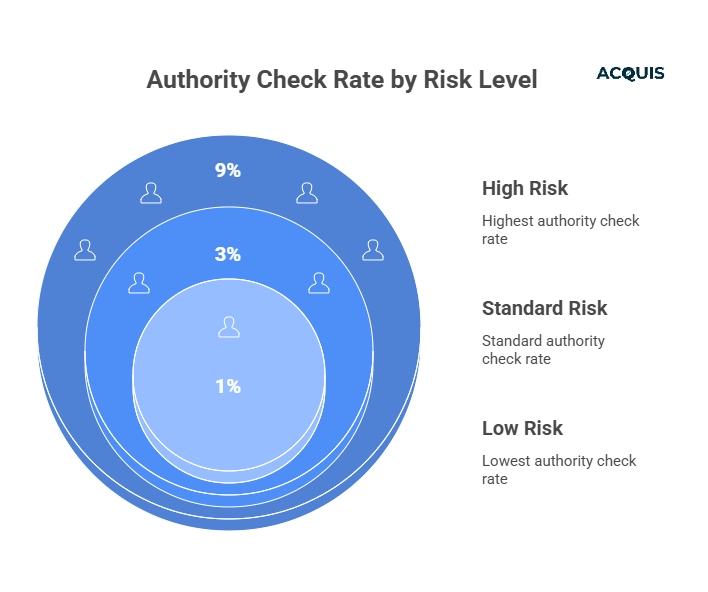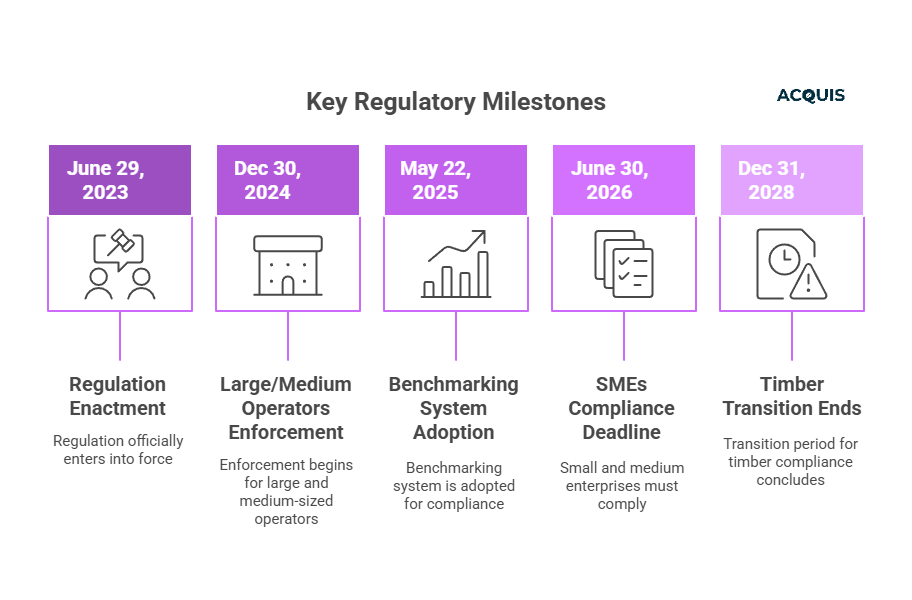Table of Contents
On May 22, 2025, the European Commission made it official: The EUDR Benchmarking System is now law.
Regulation (EU) 2023/1115, better known as the EU Deforestation-Free Products Regulation (EUDR), just leveled up. No more pilot phase. No more waiting for clarity.
For companies dealing in cattle, cocoa, coffee, palm oil, rubber, soy, or wood, this is the final boarding call, the law is real, the deadlines are fixed, and enforcement is near.
But in typical EU fashion, as the clock ticks toward December, the debate over whether to postpone enforcement has already started.
What the EUDR Actually Means
At its core, the EUDR aims to ensure that products placed on or exported from the EU market are:
- Deforestation-free, produced on land not deforested after 31 December 2020, and
- Legally produced in their country of origin.
It applies to both EU and non-EU businesses, placing strict due-diligence obligations on anyone importing or exporting high-risk commodities and their derivatives — from soy and palm oil to chocolate, paper, and furniture.
The Benchmarking System: EUDR’s Enforcement Engine
On May 22, 2025, the Commission adopted the long-awaited Benchmarking System under Article 29 — a global risk classification that determines how strict your due diligence must be.

High-risk countries (2025): Russia, Belarus, Myanmar, North Korea.
If you’re sourcing from these regions, you’ll face deeper documentation, geo-verification, and audit scrutiny.
The Postponement Debate (October 2025)
Here’s the contradiction: The EUDR is enforceable, but the systems required to enforce it aren’t fully ready.
- The EUDR Information System (TRACES upgrade) has slipped to late 2025, leaving companies with nowhere to file their due-diligence statements.
- Germany, Italy, and Hungary are pushing for a 12–18-month extension to avoid trade disruption.
- Meanwhile, NGOs and northern states (like the Netherlands and Finland) argue that any delay would gut the EU’s deforestation-free credibility ahead of COP30.
DG ENV and DG AGRI are currently exploring a phased enforcement period — meaning lighter penalties early on — but no legal amendment has been passed. As of now, December 30, 2024 remains the law.
EUDR Compliance Timeline

What Businesses Need to Do Right Now
Compliance isn’t just paperwork anymore — it’s data management.
- Map Your Supply Chain: collect plot-level geo-coordinates and harvest data.
- Assess Risk Exposure: identify high-risk regions and alternative sourcing options.
- Centralize Documentation: legal proof, supplier declarations, and risk logs in one system.
- Engage Suppliers: train and align them with your EUDR obligations.
- Digitize Everything: use automation for data validation and reporting readiness.
Ignoring this until the EU confirms a delay would be a high-risk gamble. Because even if enforcement softens, liability won’t.
Final Takeaway
The EUDR is no longer a future regulation — it’s active law. Whether the EU opts for a short-term grace period or not, the expectation is clear: Deforestation-free, traceable, and verifiable supply chains.
Companies that move now will define the benchmark for compliance leadership. Those who wait for “clarity” may find their shipments stopped at customs.
Need help building your EUDR-ready due-diligence workflow? Let’s talk before the Commission starts checking.
